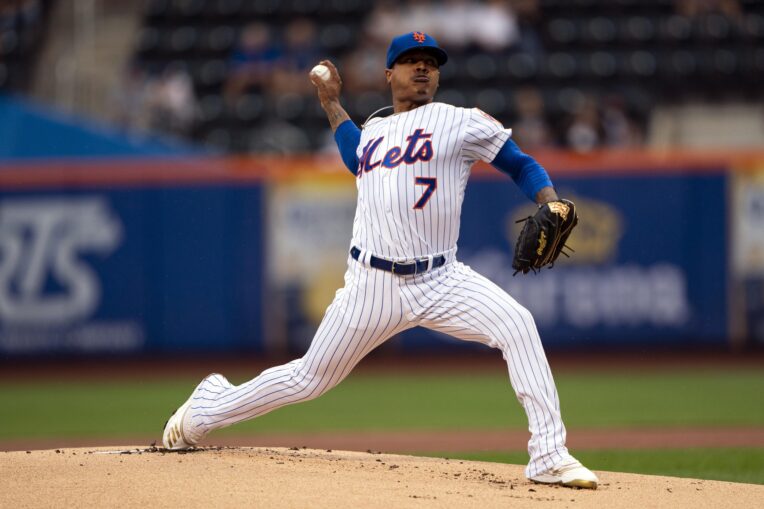
When the Mets acquired Marcus Stroman from the Toronto Blue Jays prior to the trade deadline this past summer, they had one thing in mind: having him be Zack Wheeler‘s replacement.
Sure, the two shared the same rotation down the stretch for a playoff push for two months, but overall, the front office viewed Stroman as an option for when Wheeler left via free agency.
Wheeler, who put up nearly 9 fWAR in 2018 and 2019, was extended a qualifying offer, but ultimately took a five year deal from the Philadelphia Phillies.
So now the Mets vision has come true. Stroman will be the Mets No. 3 starter, and Wheeler’s “replacement.”
We can argue that the team would be much better off with both pitchers, and how Stroman and Wheeler is better than Wheeler and Jason Vargas, but that’s a topic for a different day.
The point now is that Stroman is Wheeler’s replacement, and the Mets are going to lean heavy on him to have a big season.
Stroman is a solid pitcher in his own respect. The right-hander put up 3.9 fWAR in 2019 between the Blue Jays and the Mets, and is in the middle of his prime years.
However, Stroman will have to escalate his game a bit to soften the blow of losing Wheeler. The Long Island native has put up over 3 fWAR in four of the six years he’s been in the league. That’ll definitely play. He’s also entering his contract year, so will be looking to have a strong campaign to get a big deal in free agency next year.
Stroman has a lot of positives in his game, which made him a popular name on the trading block in July.
His curve spin (75th percentile), exit velocity (62nd percentile), xWOBA (73rd percentile), xSLG (73rd percentile), fastball spin (89th percentile) and hard hit rate (60th percentile) are all strong qualities to have. However, while Stroman has put up some solid campaigns, he has never truly achieved ace level.
The Mets don’t necessarily need him to be that, but as it currently stands, he’s still a step below the pitcher he is “replacing” for 2020.
Stroman lowered his barrels to 4.1 in 2019, his exit velo to a career low 87.5 mph, hard hit rate to 35.2 and elevated his strikeout rate to 20.5 percent in 2019. However, his opposing launch angle skyrocketed from 0.4 in 2018 to 5.2 in 2019.
A big thing Stroman needs to limit is his home runs allowed. His FB/HR percentage is a dreadful 13.5 percent for his career. He does induce a lot of groundballs, as we can tell from his respectable 58.6 percent career rate, but playing in a cavernous park like Citi Field, if Stroman can lower his home runs allowed and induce more groundballs, we can see his game escalate.
Overall, Stroman is a big piece in the Mets success in 2020, especially for a rotation that is significantly weaker than it was at the end of the 2019 campaign.















